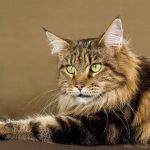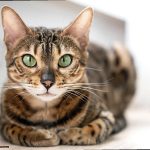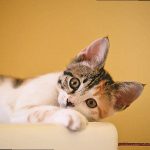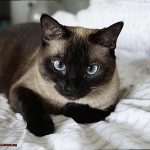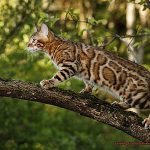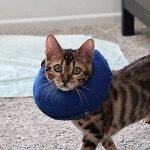As a cat parent, you want nothing but the best for your furry friend. But with so many options out there, it can be overwhelming to know which cat food is truly healthy. That’s where we come in – this blog post will be your ultimate guide to finding the healthiest cat food for your beloved pet.
Cats are carnivores by nature, and their diet should reflect that. However, not all cat foods are created equal, and some can actually harm your cat’s health in the long run. To ensure that your feline friend stays healthy and happy, it’s crucial to pay attention to the ingredients in their food.
In this post, we’ll delve into the key factors to look for when choosing the healthiest cat food for your kitty. We’ll cover everything from high-quality protein sources and limited preservatives/additives to essential vitamins and minerals. Plus, we’ll debunk some common myths about cat food along the way.
By the end of this post, you’ll have a better understanding of how a balanced diet can benefit your cat’s health and happiness. So let’s dive in and explore what makes for truly healthy cat food.
Why is it Important to Choose the Right Cat Food?
What your cat eats can significantly affect their physical and mental health, energy levels, coat quality, and lifespan. Providing them with the wrong diet could lead to a host of health issues such as obesity, diabetes, urinary tract problems, and digestive problems.
Here are some compelling reasons why it is crucial to choose the right cat food:
- A Nutritionally Balanced Diet: Cats require a nutritionally balanced diet that provides all the necessary vitamins, minerals, and nutrients for their biological processes. High-quality cat food should contain high-quality protein from animal sources like meat or fish, essential amino acids like taurine, and whole-food sources of carbohydrates like sweet potatoes or brown rice.
- Obligate Carnivores: Cats are obligate carnivores, which means their diet should primarily consist of meat. They need high amounts of protein and amino acids to maintain healthy muscle mass, organ function, and other biological processes. Feeding them a diet that is high in carbohydrates or lacking in essential nutrients can cause severe health problems.
- Age and Activity Level: It is crucial to choose cat food based on their age, activity level, and any health conditions they may have. Kittens require more protein and calories than adult cats, while senior cats may need a diet that supports their aging body. Active cats may need more calories to maintain their energy levels, while overweight cats may need a diet that helps with weight management.
- Quality Ingredients: The overall quality of the ingredients in your cat’s food is essential. Look for brands that use high-quality, human-grade ingredients and avoid those that contain artificial preservatives, colors, or flavors.
- Prevent Health Issues: Providing your cat with a well-balanced diet can help prevent a range of health issues such as obesity, diabetes, urinary tract problems, and digestive problems. It can also improve their immune system, promote healthy skin and coat, and support their overall health and well-being.
What to Look for When Choosing Healthy Cat Food
When it comes to choosing healthy cat food, there are several factors to keep in mind.
Ingredient Quality
The ingredients used in cat food play a crucial role in determining its nutritional value. Look for brands that use high-quality, whole food ingredients such as real meat, fruits, and vegetables. Avoid foods that contain fillers or low-quality by-products, as these can be difficult for cats to digest and may not provide adequate nutrition.
Protein Content
Cats are obligate carnivores, which means that they require a diet rich in animal protein. Look for foods that have a protein content of at least 30%, with meat listed as the first ingredient. This will help ensure that your cat gets the essential amino acids they need to maintain strong muscles and overall health.
Food Type
The type of food you choose can also impact your cat’s health and wellbeing. Wet food is a great option because it provides more moisture, which can help prevent dehydration and urinary tract problems. Dry kibble is convenient but often contains more carbohydrates and less moisture than wet food.
Nutrient Balance
Look for foods that are labeled “complete and balanced” by the Association of American Feed Control Officials (AAFCO). This means they meet minimum nutritional requirements for cats and provide a balanced blend of nutrients, including protein, carbohydrates, fats, vitamins, and minerals.
Specific Needs
Every cat is unique, and some may have specific dietary needs or restrictions. For example, some cats may require a grain-free or limited ingredient diet due to food allergies or sensitivities. Senior cats may benefit from a food specifically formulated for their age group, while overweight cats may need a lower-calorie option.
Consult with Your Vet
Before making any changes to your cat’s diet, consult with your veterinarian. They can help you determine what type of food will best support your cat’s health and wellbeing based on their individual needs and medical history.
Protein Sources in Cat Food
And when it comes to cat food, protein is one of the most crucial nutrients to consider. But not all proteins are created equal, and it’s important to pay attention to both the source and quality of protein used in your cat’s food.
Animal-based proteins, such as chicken, turkey, beef, lamb, and fish, are the best sources of protein for cats. These proteins contain all the essential amino acids that cats need to maintain good health. Moreover, they are more easily digestible for cats than plant-based proteins.
When you’re reading cat food labels, be sure to check that the source of protein is listed as the first ingredient. This indicates that the food contains a high percentage of protein from the listed source. If the source of protein is not an animal-based protein or is not listed as the first ingredient, it may not be the healthiest option for your cat.
But it’s not just about the source of protein – quality matters too. High-quality proteins come from whole meats rather than by-products or meals. By-products can include organs, bones, and other non-meat animal parts. Meals are made from rendered meat products and can contain lower-quality proteins.
To ensure that your cat is getting the best possible nutrition, look for food that lists animal-based proteins as the first ingredient and uses high-quality whole meats instead of by-products or meals. This will help keep your furry friend healthy and happy for many years to come.

In addition to choosing good cat food, it’s also essential to consult with your veterinarian to ensure that your cat’s diet is complete and balanced. Your vet can provide guidance on how much protein your cat needs and recommend specific brands based on their nutritional content.
Carbohydrates in Cat Food
Carbohydrates are an essential component of cat food, but not all carbohydrates are created equal. While cats are obligate carnivores and require a protein-rich diet, they also need a small amount of carbohydrates to maintain their health and energy levels.
Unfortunately, some cat foods contain high levels of carbohydrates from grains, such as corn or wheat. These grains can be difficult for cats to digest and may lead to health problems like obesity, diabetes, and gastrointestinal issues. To avoid these problems, it’s crucial to choose high-quality cat food that contains the right balance of carbohydrates.
When selecting cat food, read the label carefully and look for high-quality sources of carbohydrates like sweet potatoes or peas. These sources are easier for cats to digest and provide important nutrients like fiber and vitamins. Additionally, consider your cat’s individual needs when choosing their food. If your cat has specific health issues like digestive problems or diabetes, consult with your vet about the best diet for them.
It’s also essential to choose a complete and balanced diet that contains all the necessary nutrients your cat needs to stay healthy. A well-balanced diet should include protein, fat, carbohydrates, vitamins, and minerals.
Quality of Ingredients in Cat Food
And when it comes to their diet, choosing the right cat food is essential to keep them happy and healthy. However, with so many options available in the market, selecting the perfect cat food can be daunting. But worry not, because the key to finding the right cat food lies in the quality of ingredients used.
Here are some compelling reasons why you should prioritize the quality of ingredients when selecting cat food:
Human-Grade Ingredients
Just like humans, cats require high-quality ingredients to maintain optimal health and energy levels. Thus, opting for cat food that uses human-grade ingredients is one of the best ways to ensure that your furry friend gets superior nutrition. When you choose cat food made with human-grade ingredients, you can rest assured that they meet the same safety and quality standards as those used in human food. Though these types of foods may be more expensive, they can offer better overall health outcomes for your cat.
Source of Ingredients
Another critical aspect affecting the quality of cat food is the source of its ingredients. You want to find a cat food that uses whole-food ingredients sourced from reputable suppliers. It’s best to avoid foods containing fillers or byproducts and instead look for those that use real meat as their primary ingredient. This will provide your cat with essential nutrients required for a healthy and well-balanced diet.
Nutrient Content
When evaluating cat food, it’s crucial to check its nutrient content. Look for foods that provide a balance of protein, fat, and carbohydrates, along with essential vitamins and minerals. Be cautious of foods containing excessive amounts of fillers or artificial additives as they can lead to health problems such as obesity or digestive issues.
Wet vs Dry Cat Foods
With so many options available, it can be a challenge to decide between wet and dry cat food. But fear not, we’re here to help you make an informed choice.
Let’s start by exploring the benefits of wet cat food. One of the most significant advantages of wet food is its high moisture content. As cats are notorious for being poor drinkers, providing them with a diet that keeps them hydrated is vital for their health. Wet food is also usually more palatable than dry food, making it ideal for picky eaters or cats with dental problems.
However, it’s worth noting that wet cat food can be more expensive than dry food and has a shorter shelf life once opened. It can also be messier to feed and may require more frequent cleaning of bowls and feeding areas.
Now let’s take a look at dry cat food. Dry food is generally more affordable than wet food and has a longer shelf life, which makes it more convenient for pet owners. Additionally, dry food is energy-dense, so your cat will need to eat less of it to meet their nutritional needs. This can be particularly useful for overweight or obese cats.
However, it’s essential to consider the low moisture content of dry cat food, which can contribute to dehydration and kidney problems if your cat doesn’t drink enough water. Some cats may also find it less appealing than wet food, leading to pickiness or weight loss.
Natural, Organic, and Grain-Free Foods
When it comes to cat food, there are numerous options available in the market, but natural, organic, and grain-free cat foods have gained immense popularity in recent years.
What exactly do these terms mean? Natural cat food includes ingredients that are minimally processed and free from artificial additives. These foods often contain whole meats, fruits, and vegetables that provide essential nutrients for cats. Organic cat food takes things a step further by using only ingredients that have been grown without the use of pesticides or synthetic fertilizers.
On the other hand, grain-free cat food eliminates grains such as wheat, corn, and rice from the recipe. This is because some cats may find it challenging to digest these ingredients or have allergies to them. Instead, these foods use alternative sources of carbohydrates such as potatoes or peas.
While natural, organic, and grain-free cat foods may seem like the healthiest options available, not all products are created equal. It is crucial to read ingredient labels and choose products that meet your cat’s specific nutritional needs. Consulting with a veterinarian can also help you make informed decisions about your cat’s diet.
When selecting natural, organic, or grain-free cat food, look for products that contain high-quality protein sources like chicken or fish as well as essential vitamins and minerals. Avoid foods that are high in carbohydrates or contain artificial preservatives or fillers.
Special Dietary Needs for Cats
Cats are obligate carnivores, meaning they require animal protein in their diet to function properly. But what about cats with special dietary needs? Let’s explore this topic further.
Some cats may require a special diet due to health issues or allergies. For instance, cats with kidney disease may need a low-protein diet to reduce the workload on their kidneys. On the other hand, cats with food allergies or sensitivities may require diets free of certain ingredients such as chicken or grains.
Fortunately, there are many types of special diets available for cats that can help meet their specific nutritional needs. Prescription diets are formulated specifically for cats with certain medical conditions and may be more expensive but worth the investment to ensure your cat’s health. Commercial diets formulated for specific health conditions are also available and can be free of common allergens while containing added nutrients to support your cat’s overall well-being.
It’s important to consult with your veterinarian if you suspect your cat has special dietary needs. They can help you determine the best type of food for your cat and provide guidance on proper nutrition. Additionally, it’s crucial to monitor your cat’s weight and general health and adjust their diet accordingly.
Conclusion
In conclusion, the health of your feline friend depends on the quality of cat food you choose. As obligate carnivores, cats require a diet rich in animal protein and essential amino acids. Therefore, it’s crucial to select cat food that contains high-quality protein sources and limited preservatives/additives.
When choosing healthy cat food, consider your cat’s age, activity level, specific needs or restrictions, and consult with your veterinarian before making any changes to their diet. Wet food is an excellent option as it provides more moisture than dry kibble and can help prevent dehydration and urinary tract problems.
To ensure a nutritionally balanced diet for your cat, look for high-quality sources of carbohydrates like sweet potatoes or peas. Additionally, consider natural, organic or grain-free cat foods that contain high-quality protein sources like chicken or fish as well as essential vitamins and minerals.
Providing your furry friend with a well-balanced diet can prevent various health issues such as obesity, diabetes, urinary tract problems, and digestive problems. It also improves their immune system, promotes healthy skin and coat while supporting overall health and happiness for years to come.
In summary, selecting the healthiest cat food for your furry friend requires careful consideration of their dietary needs while paying attention to the quality of ingredients used in the product.
